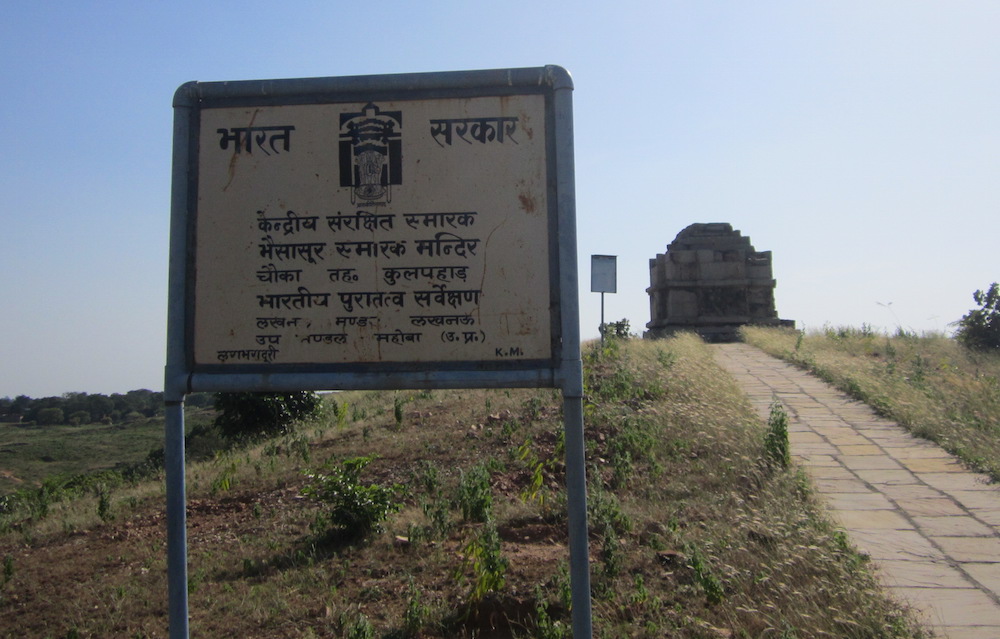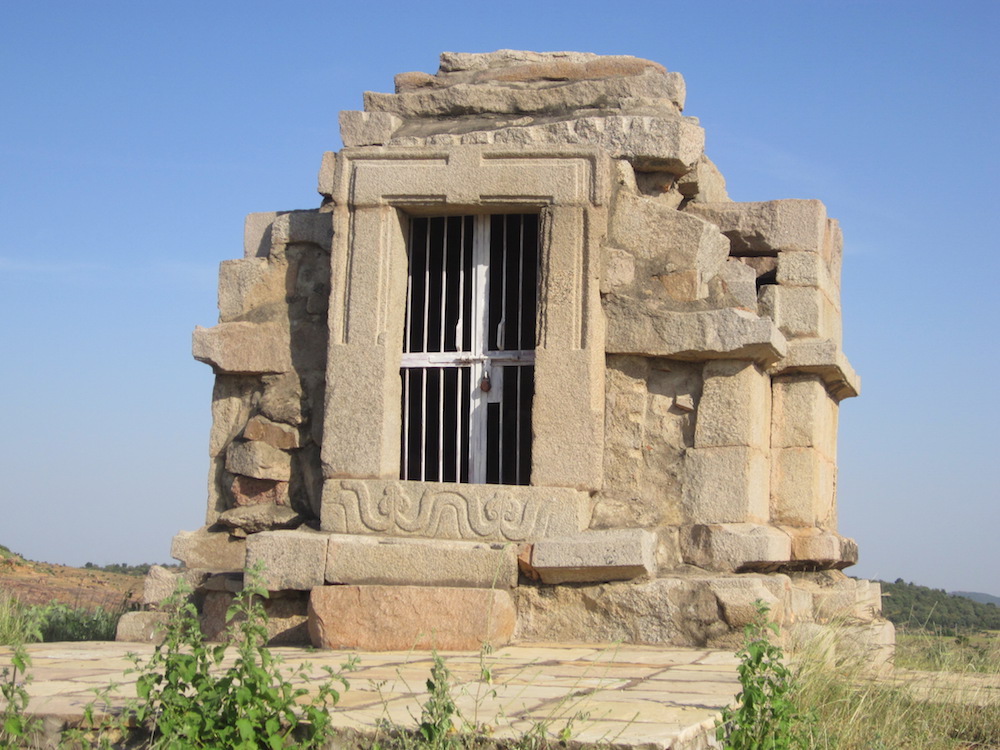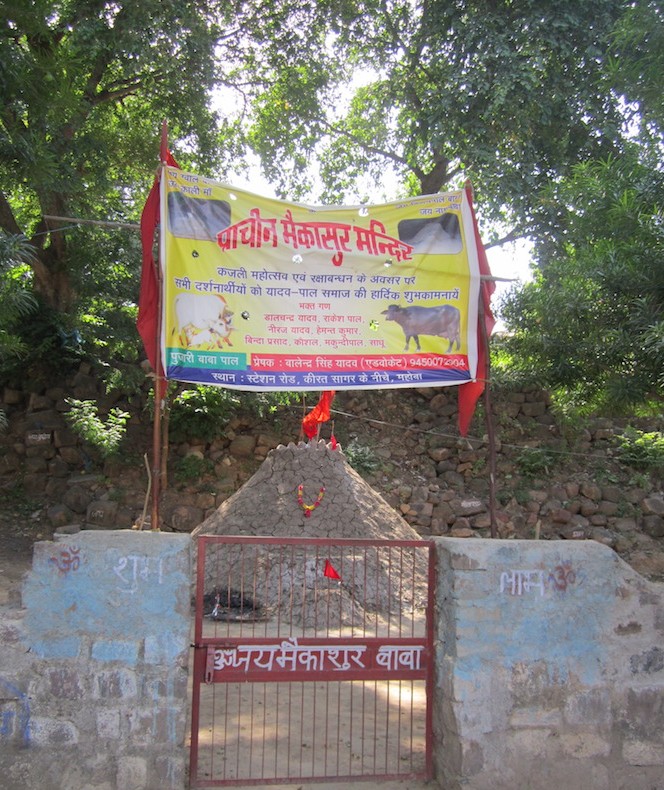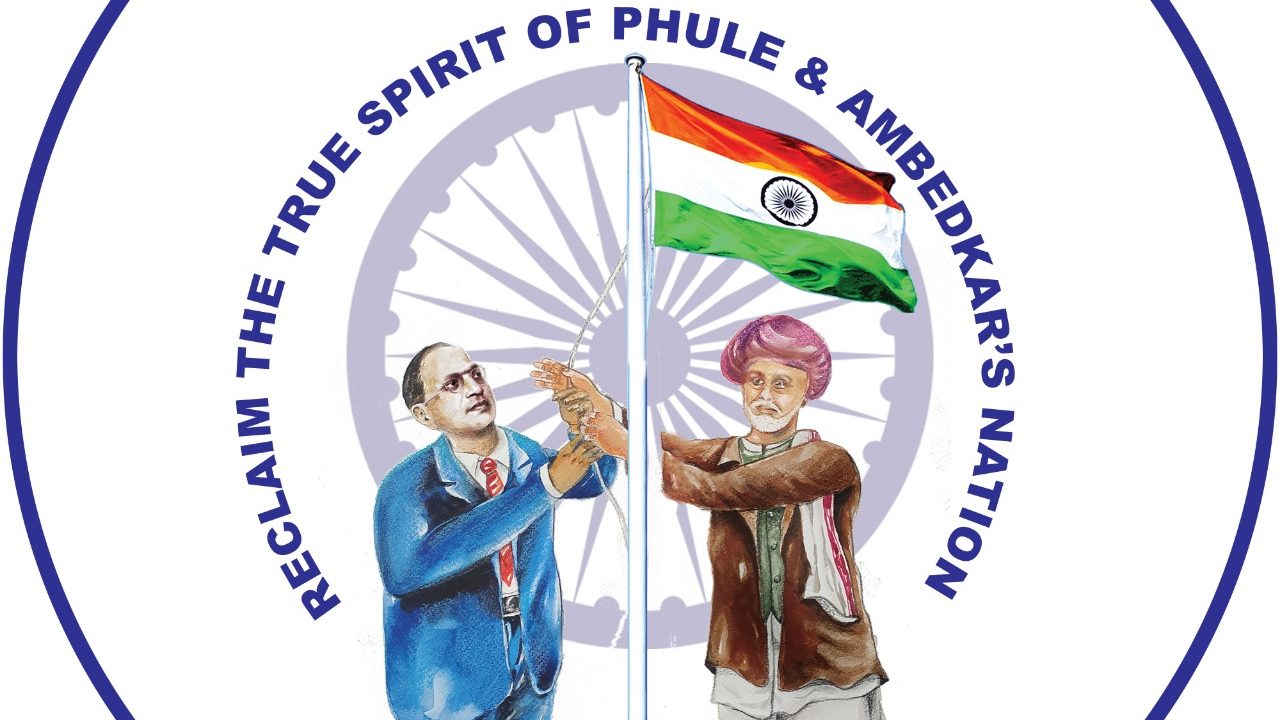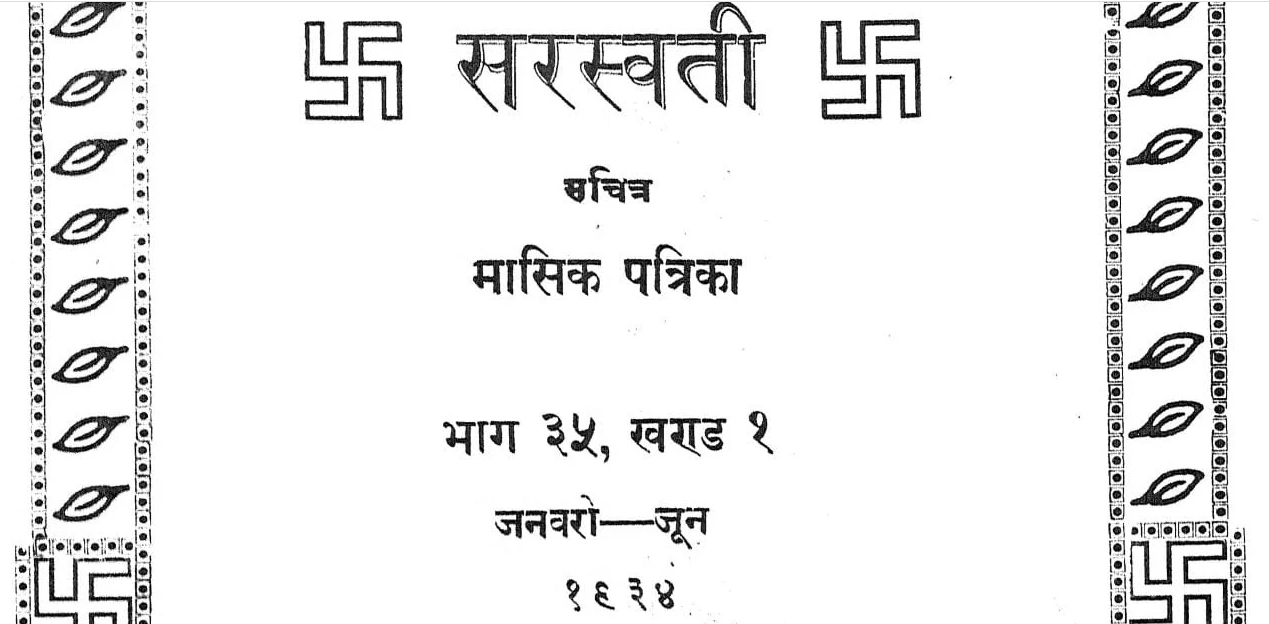These days, I am editing a book Mahishasur Movement: Debrahmanising a Myth. Some historians have suggested in their works that Mahishasur was the mythological hero of the Bahujan communities of India. According to D.D. Kaushambi, Mahishasur’s realm was Mahoba in Bundelkhand. In connection with the research for my book, I reached Mahoba on 2 October. Mahishasur’s memories still survive in the folk traditions of Mahoba. He is known as Maikasur, Kaaras Dev, Gwal Baba, etc in this area. Almost every village in Mahoba has a place for him. There are no idols of Mahishasur, only raised platforms made of clay. Unlike in the brahmanical tradition, Mahishasur does not live in temples. He lives on clay platforms under the open sky.
Traditions related to Mahishasur are alive in almost all parts of the country. For the past few years, Bahujans are attempting to revive their myths and traditions. This year, writers and intellectuals came together in Mysore to begin a campaign for restoring Mahishasur’s lost honour. Mahishasur Martyrdom Day was celebrated in many parts of north India. While we will be publishing reports of these events in the coming issues of FORWARD Press, for now, here is a peek into the Mahoba of Mahishasur.
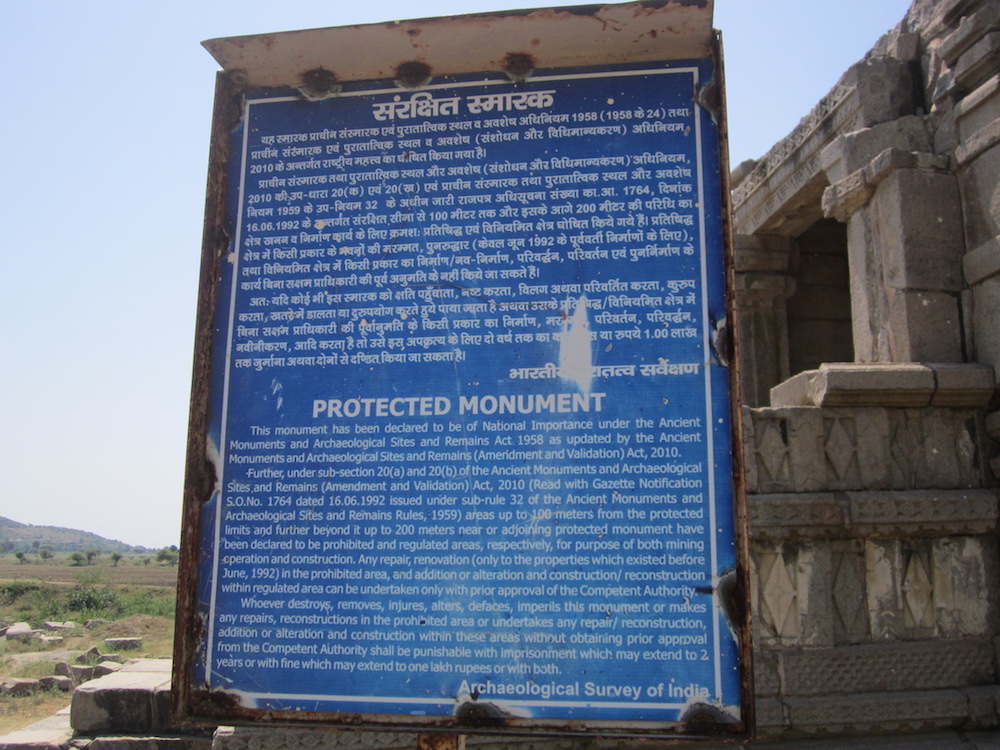 The Mahishasur temple at Chauka Sora village, about 70 km from Mahoba in Bundelkhand, is under Archaeological Survey of India (ASI) protection. The ASI has not yet determined the period of its construction but the antiquity of the monument is evident from the fact that while the punishment for causing damage to the Khajuraho temples is a fine of Rs 5,000 or imprisonment for three months (or both), it is Rs 100,000 or imprisonment for two years (or both) for the Mahishasur temple. The Khajuraho temple complex is said to be at least 1,000 years old
The Mahishasur temple at Chauka Sora village, about 70 km from Mahoba in Bundelkhand, is under Archaeological Survey of India (ASI) protection. The ASI has not yet determined the period of its construction but the antiquity of the monument is evident from the fact that while the punishment for causing damage to the Khajuraho temples is a fine of Rs 5,000 or imprisonment for three months (or both), it is Rs 100,000 or imprisonment for two years (or both) for the Mahishasur temple. The Khajuraho temple complex is said to be at least 1,000 years old
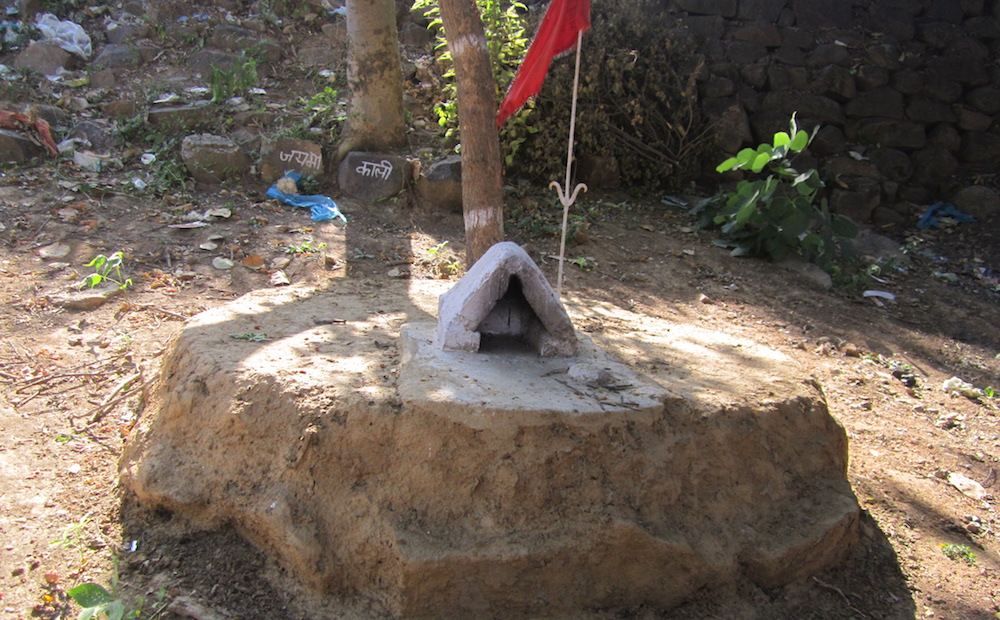 The “sthan” of “Maikasur” (Mahishasur) at Keerat Sagar, near Mahoba. Legend has it that Mahishasur cures sick animals. When an animal starts giving milk, it is first offered to Mahishasur. The pastoral and agricultural castes of Mahoba regard Mahishasur as their ancestor
The “sthan” of “Maikasur” (Mahishasur) at Keerat Sagar, near Mahoba. Legend has it that Mahishasur cures sick animals. When an animal starts giving milk, it is first offered to Mahishasur. The pastoral and agricultural castes of Mahoba regard Mahishasur as their ancestor
 The sthan of Mahishasur at Mohari village in Kulpahad area, about 30 km from Mahoba. The villagers have built a cemented platform by its side. Traditionally, there have been no Mahishasur idols. The newly built platform at Mohari does not have an idol. Instead, there are statues of Mahishasur’s companion buffalo and peacock, the companion of his another form “Karas Dev”
The sthan of Mahishasur at Mohari village in Kulpahad area, about 30 km from Mahoba. The villagers have built a cemented platform by its side. Traditionally, there have been no Mahishasur idols. The newly built platform at Mohari does not have an idol. Instead, there are statues of Mahishasur’s companion buffalo and peacock, the companion of his another form “Karas Dev”
 Ramkishore Pal, the priest of Maikasur temple
Ramkishore Pal, the priest of Maikasur temple
 Pramod Ranjan talks to Ghanshyam Tyagi, the priest of the Shiva temple near Maikasur’s sthan at Gokhaar Pahad (the place where famous Naathpanth poet Goraknath and his disciples worked), near Mahoba. Tyagi says that Bahujans of the area have great reverence for Mahishasur. Till about 25-30 years ago, Durga Utsav was not celebrated in the area. On the “Shasthi’ (sixth day) of Bhadra Paksha, a special puja of Mahishasur is performed. Sweets made of milk, coconut, etc are offered to him. “Bhav Khela” (a ritual in which the participants enact being possessed after a god enters their bodies) also forms part of the celebrations
Pramod Ranjan talks to Ghanshyam Tyagi, the priest of the Shiva temple near Maikasur’s sthan at Gokhaar Pahad (the place where famous Naathpanth poet Goraknath and his disciples worked), near Mahoba. Tyagi says that Bahujans of the area have great reverence for Mahishasur. Till about 25-30 years ago, Durga Utsav was not celebrated in the area. On the “Shasthi’ (sixth day) of Bhadra Paksha, a special puja of Mahishasur is performed. Sweets made of milk, coconut, etc are offered to him. “Bhav Khela” (a ritual in which the participants enact being possessed after a god enters their bodies) also forms part of the celebrations
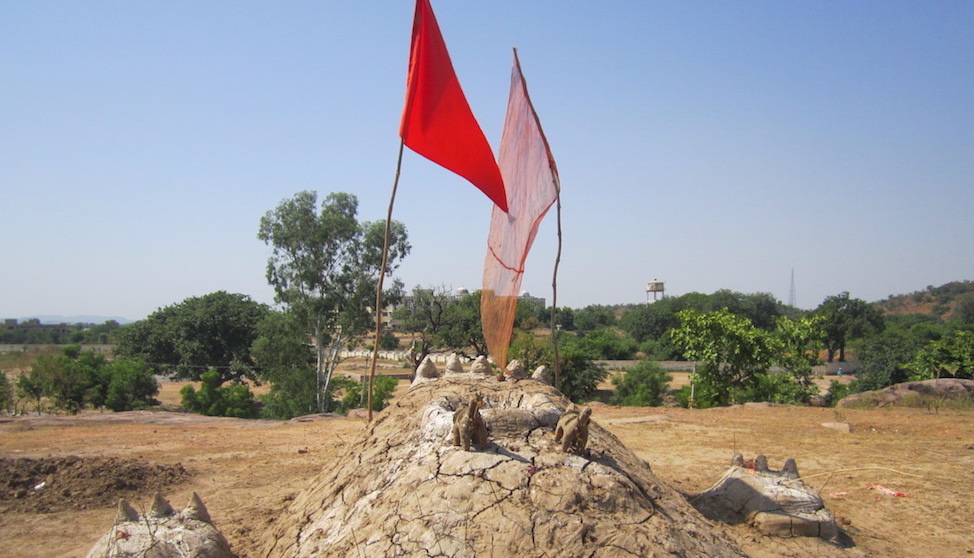 Mahishasur’s “sthan” made of clay on the Gokhaar Pahad
Mahishasur’s “sthan” made of clay on the Gokhaar Pahad
 Maikasur sthan at Ramnagar in Charkhari, located at a spot far from any human settlement
Maikasur sthan at Ramnagar in Charkhari, located at a spot far from any human settlement
Published in the November 2015 issue of the FORWARD Press magazine
